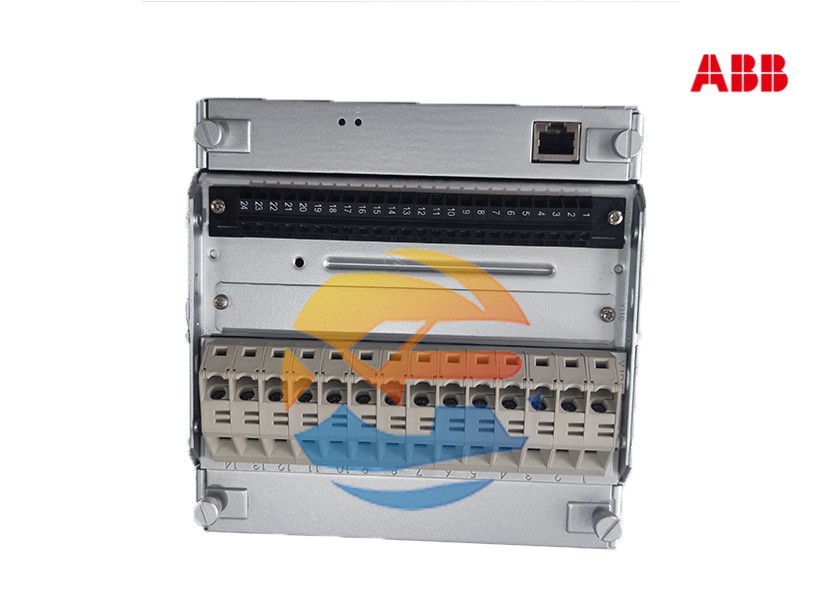For protection engineers and technicians, specifying and integrating a relay like the ABB REF615 HBFFAEAGNBC6BNA11G is a hands-on process. Success hinges on correct sourcing, precise configuration, and rigorous testing. This guide provides a practical, step-by-step overview for professionals, covering the key considerations from procurement and software setup to commissioning and maintenance.

Pre-Procurement: Verification and Compatibility
Before ordering, it is crucial to confirm that this specific model meets your project's requirements.
-
Decode the Configuration: As outlined in the first article, the suffix HBFFAEAGNBC6BNA11G specifies the hardware. Verify that this configuration matches your needs for:
- Auxiliary Power Supply: Does the voltage rating (e.g., 110-250V AC/DC) match your panel's supply?
- I/O Count: Does the number of binary inputs and output relays suffice for your interlocking and control needs?
- Communication: Does the included protocol support (e.g., IEC 61850, Modbus) match your SCADA or control system?
-
CT and VT Requirements: Ensure the relay's current and voltage input ratings are compatible with your existing Current Transformers (CTs) and Voltage Transformers (VTs).
Step 1: Sourcing Authentic Components
Warning: The market for critical protection equipment contains counterfeit products that can fail to operate during a fault, with catastrophic consequences.
- Source from Authorized Distributors: Always purchase the REF615 HBFFAEAGNBC6BNA11G from an authorized ABB distributor. This is the only way to guarantee a genuine, new product with full warranty and technical support.
- Beware of Unrealistic Prices: If a price seems too good to be true, it likely is. Counterfeit relays pose a severe safety and operational risk.
- Check Lifecycle Status: Verify the product's lifecycle status on ABB's official website to ensure it is not obsolete or nearing end-of-life.
Step 2: Software Configuration and Setting Calculations
The relay is configured using ABB's PCM600 engineering software. This is the most critical engineering phase.
- Install PCM600 and IED Package: Ensure you have the correct version of PCM600 and the specific Device Description (IED Package) for the REF615.
- Connect to the Relay: Connect your laptop to the relay's front-port via Ethernet or optical fiber.
- Read the Configuration: Upload the current configuration from the relay to PCM600.
- Calculate Protection Settings: This requires a detailed study of your electrical network. Key calculations include:
- Overcurrent Settings (51): Determine the pickup current and select the correct time-current curve (e.g., IEC Standard Inverse) to coordinate with upstream and downstream devices.
- Instantaneous Settings (50): Set above the maximum load current and below the minimum fault current.
- Earth-Fault Settings (51N): Similar to phase overcurrent, but typically set at a more sensitive level.
- Configure Logic: Use the built-in Configurable Logic (CFG) to create custom interlocking schemes or alarm conditions without additional hardware.
- Set Communications: Configure the IEC 61850 data model, assigning data points to be reported to the SCADA system.
- Download and Verify: Download the new configuration to the relay and verify that all settings have been applied correctly.
Step 3: Commissioning and Primary Injection Testing
Commissioning must be performed by qualified personnel following strict safety protocols (LOTO).
- Secondary Injection Test: Use a relay test set to inject simulated currents and voltages into the relay. Verify that it picks up and trips at the exact specified values and times. This validates the settings and the relay's internal logic.
- Primary Injection Test: This is the ultimate validation. A high-current test set injects current directly through the primary conductors of the switchgear, passing through the CTs to the relay. This tests the entire circuit—CTs, wiring, and the relay itself—ensuring the system will operate correctly during a real fault.
- Trip Circuit Testing: Verify that the relay's output contacts correctly energize the circuit breaker's trip coil.
- GOOSE Testing: If using IEC 61850 GOOSE, simulate messages to verify interlocking schemes with other relays.
Best Practices for Maintenance
- Regular Settings Backup: Keep secure, version-controlled backups of all relay settings.
- Periodic Testing: Perform secondary injection tests during planned outages to ensure the relay's health.
- Event Report Analysis: After any operation, download and analyze the relay's detailed event report and fault records to understand the system event.
Conclusion
Successfully integrating the ABB REF615 HBFFAEAGNBC6BNA11G requires a methodical approach centered on technical verification, authentic sourcing, precise configuration, and rigorous testing. By following this disciplined process, protection engineers can ensure this advanced relay will perform its critical protective role flawlessly, safeguarding both personnel and electrical assets for years to come.
